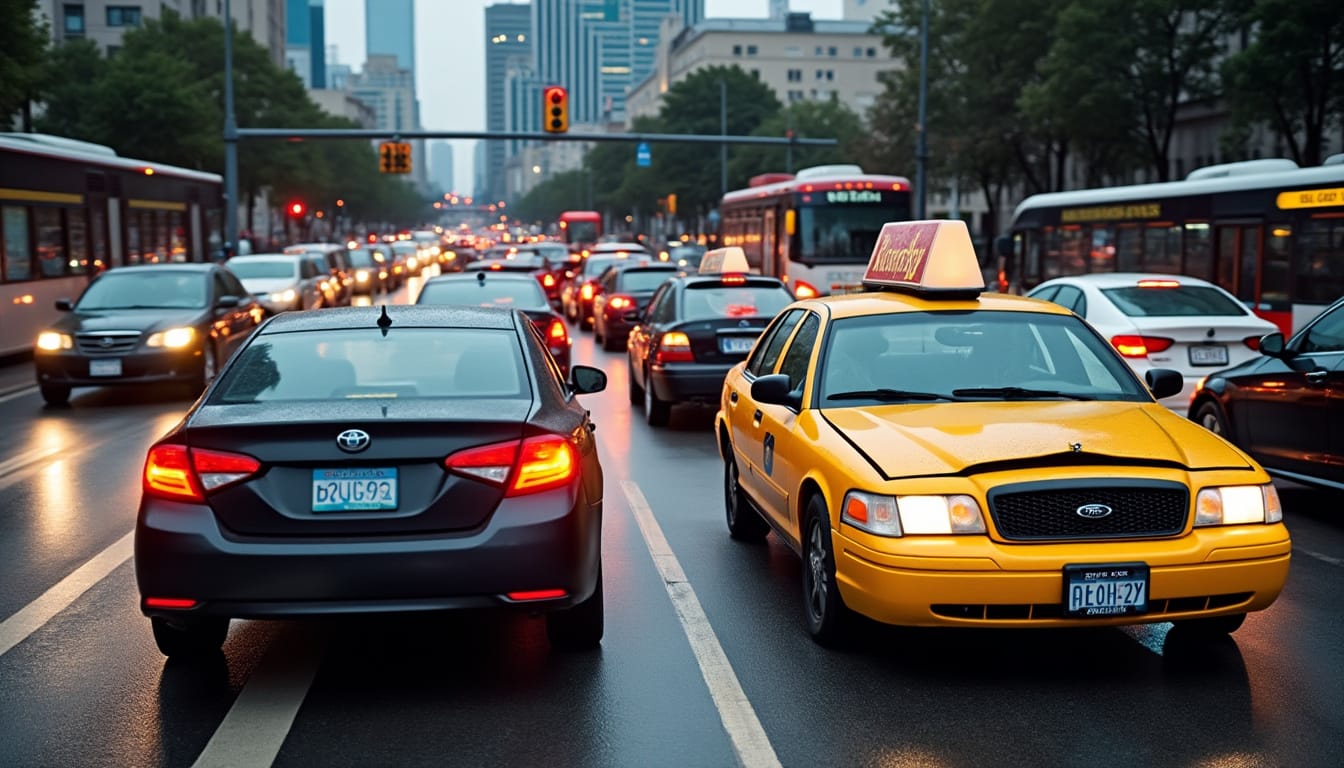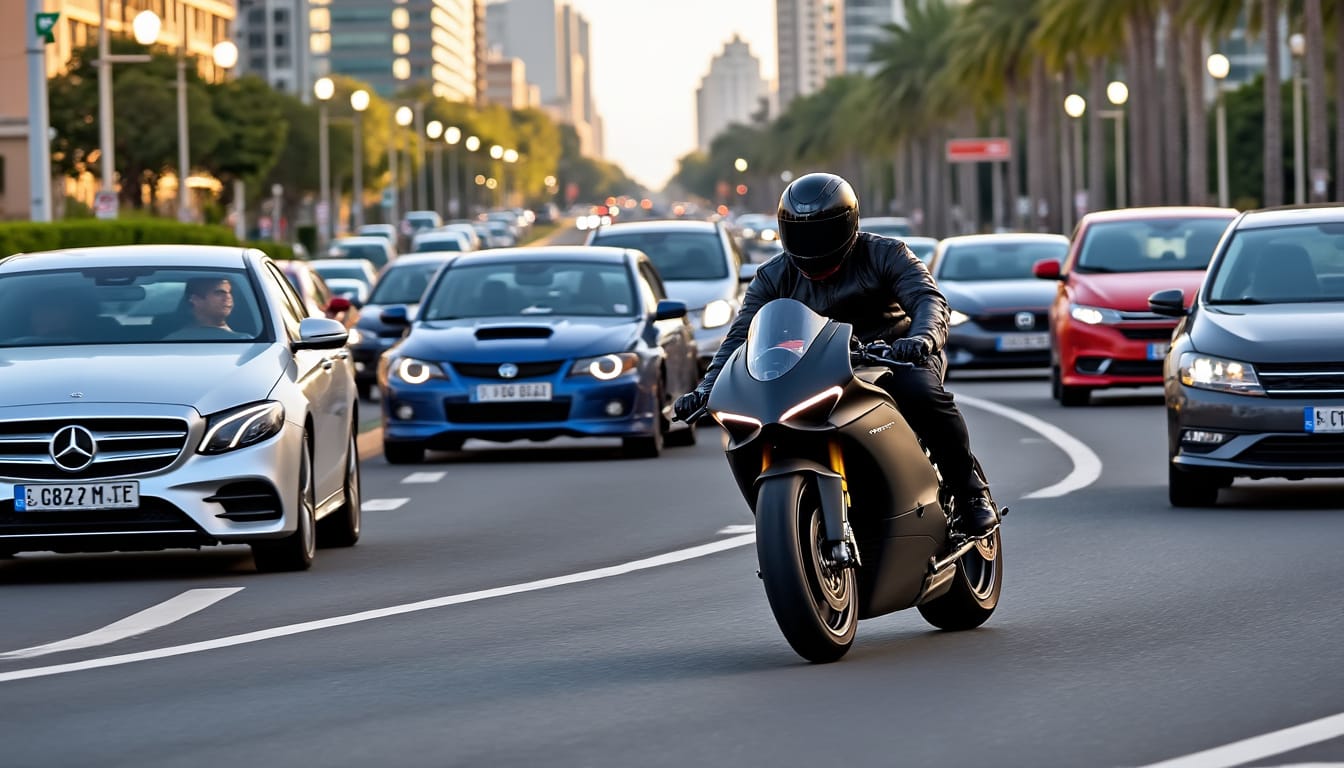Major change for motorcycle lane splitting starting January 1

Starting January 1, 2025, a crucial change in the regulations regarding lane splitting for motorcycles is expected, thus disrupting the daily lives of motorcyclists in France. While the practice of lane splitting had been tolerated under an experimental framework since 2016, this measure will be abolished, and motorcyclists will have to comply with strict rules of the Highway Code. This development is already drawing reactions from the motorcycling community, especially in urban areas where traffic is often hindered by congestion. Our roads, which have become a real obstacle course, will need to be rediscovered under this new regulation.
Context of Lane Splitting for Motorcycles in France
For several years, motorcyclists have enjoyed a tolerance for lane splitting, particularly in areas with high traffic density like those encountered in the Paris region. This practice allowed motorcycles to weave between vehicles, providing an alternative to combat traffic jams. However, the regulation governing it was experimental and sparked numerous debates about its implications for road safety.
Originally, lane splitting was authorized in eleven departments before being extended to a total of 21 departments, all characterized by heavy road congestion. The criteria to be met were strict: roads had to have a central divider, and the speed limit had to be at least 70 km/h, with motorcyclists not exceeding 50 km/h. Despite mixed results in terms of safety, the trend continued until the decision to revert to previous rules.
The Experimentation and Its Results
During this experimental period, various studies were conducted to assess the impact of lane splitting on road safety. For example, a report published in 2021 revealed a 10% decrease in motorcycle accidents nationwide. However, conversely, some roads where lane splitting was permitted saw a 12% increase in accidents. These contrasting results have raised questions about the actual effectiveness of the measure and the necessity of maintaining this practice.
The behaviors of motorcyclists have also been scrutinized. Some of them were identified as having a tendency to exceed speed limits or adopt risky maneuvers to make the most of this tolerance. A road safety issue was thus highlighted, prompting authorities to reconsider the stakes involved in this practice.
The Stakes of Ending Lane Splitting
With the completion of this experimental phase, motorcyclists will have to face a new reality. Starting January 1, 2025, lane splitting will be strictly prohibited. This means that all motorcyclists will now have to comply with the Highway Code concerning overtaking, which states that any overtaking must be done by changing lanes. Penalties are expected for those who violate this regulation, ranging from a fine of 135 euros to the withdrawal of three points from the driving license.
Thus, this return to regulation will require necessary adaptations on the part of motorcyclists, who will need to change their driving habits. The transition could also lead to an increase in automobile traffic in large urban areas, thereby worsening congestion. Motorcyclists will therefore need to exercise caution and vigilance, both for their safety and that of other road users.

Reactions from Motorcyclists and Professionals
The motorcycling community has already expressed concerns about the impact of this new regulation. Groups of motorcyclists, associations, and even some professionals in the sector, such as those from Honda, Yamaha, and Ducati, have spoken out on the issue. Many believe that this restriction goes against safety and fluidity in an often dense traffic flow.
Testimonials from motorcyclists highlight the need for evolving traffic rules, considering the specificity of motorized two-wheelers. In a context where traffic jams are frequent, many argue that lane splitting, when practiced cautiously and within a regulated framework, could reduce certain risks of accidents.
The Arguments in Favor of Lane Splitting
Among the many arguments put forward by proponents of lane splitting, several stand out:
- Increased safety: weaving between cars can prevent frequent rear-end accidents during traffic jams.
- Traffic fluidity: allowing motorcycles to move between lanes facilitates movement and can reduce road congestion.
- Ecological option: lane splitting can contribute to a reduction in emissions due to congestion, fostering a more environmentally friendly drive.
- Freeing up road space: motorcycles take up less space, which could alleviate road stress for other users.
The Debate on Road Safety
While motorcyclists advocate for a reevaluation of this regulation, road safety experts emphasize the dangers that can arise from uncontrolled lane splitting. They remind us that adhering to the framework of the Highway Code, particularly in urban environments, is fundamental to ensuring the safety of all, including cyclists and pedestrians.
Vigilance is therefore essential, as the return to strict regulation could also exacerbate the feeling of impunity among some motorcyclists who, accustomed to a certain freedom of movement, may be reluctant to revert. In the long term, adopting a balanced regulation that ensures both safety and fluidity seems indispensable.
The Implications for Road Users
The end of lane splitting will not only have consequences for motorcyclists but also for all road users. Indeed, the increase in automobile traffic and the redistribution of space on the roads will have varied repercussions on driving behaviors. Motorists must also be attentive to this change in traffic dynamics.
Consequences for Motorists' Behavior
Car drivers will have to face changes in their driving environment:
- Increase in traffic jams: the population of motorcyclists no longer having the ability to weave between lanes could generate additional pressure on urban roads.
- Change in behaviors: motorists will need to be more vigilant regarding motorcycles that may appear more frequently at intersections, as they will have more difficulties in navigating.
- Expectation of tolerance: a zone of mutual cohabitation will need to be established where everyone respects each other's space.
Role of Authorities and Regulatory Bodies
This results in a coordinated response from authorities being necessary to ensure that this new regulation is understood and respected. Awareness campaigns should be implemented, targeting all categories of drivers. These campaigns could include information on how to better coexist on the road between motorcycles and cars.
In this context, collaborations between regulatory bodies, road safety authorities, and motorcyclist associations, such as thoseGrouping enthusiasts of Kawasaki or Suzuki, can contribute to creating a constructive dialogue to ensure the safety of all.

Motorcyclists’ Preparation for the New Regulation
To face these changes, it is crucial that motorcyclists prepare and educate themselves on the new obligations that await them. Several actions can be considered to facilitate this transition:
A Necessary Adaptation Process
Motorcyclists will need to not only incorporate the new rules but also adapt their driving behavior. This change may include:
- Prioritize education and awareness: It is essential that every motorcyclist stays informed about the new regulations and participates in workshops or training.
- Adopt responsible behaviors: Drivers should anticipate the behaviors of other road users and show consideration, taking their environment into account.
- Participate in discussion groups: Joining motorcycle clubs or online forums can help share advice and experiences about riding.
Resources and Means to Master the Rules
Motorcyclists can also take advantage of various resources to better understand the new legislation on lane splitting:
| Source | Type of content offered | Access method |
|---|---|---|
| Motorcyclist on a ride | Explanatory articles on regulations | Online |
| Road safety for motorcyclists | Information on road safety for motorcyclists | Online |
| Motorcycle circulation regulation | Guide to the new rules | Online |
These tools can provide valuable assistance in navigating the upcoming changes, as well as reinforcing a culture of safety among motorcyclists.
Conclusion on the Future of Lane Splitting
Although this topic engenders passionate debates, it is imperative to approach these changes seriously. Long-term safety on the roads will largely depend on the responsible adoption by motorcyclists, as well as a collective understanding of the new measures. The coexistence of all road users, whether on a Harley-Davidson, a BMW Motorrad, or any other two-wheeler, must remain a priority. This period of uncertainty could also be an opportunity to reinvent motorized driving in France, ensuring both safety and efficiency on our roads.
Leave a Reply



Articles relatifs